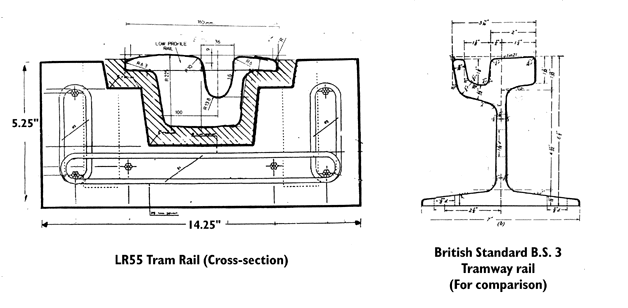
LR55 is a concept in tramway track and tracklaying which has been developed by Professor Lewis Lesley in Liverpool.
It comprises a string of concrete, lintel-like, blocks, laid along the line of each rail in a shallow trench cut in the road surface. The upper surface of the block is flush with the road surface and is cast with a groove. The rail, which is based on a rectangular grooved section, is retained flush with the surface of the block by a polyurethane mastic grout..
Cross-section drawing comparing LR55 with an older design of tram rail(33kb)

The mastic gives resilience to the rail, preventing rumbling noises being transmitted through the ground, and insulates it electrically, reducing leakage currents.
The broad base of the concrete spreads the load of the vehicle over a larger ground area than did the older rail sections. This reduces the amount of heavy foundation work needed beneath the track; and in many cases, the existing road foundation may be useable without alteration.
The ability of the pre-stressed lintel to span gaps make it possible to keep the weight of tramway vehicles off a structure beneath. This means the expense of diversion of services is avoided and any weakness in the under-road cellars of Bath can be bridged.
Report by Prof. Lesley at the Trams for Bath conference?
More about the testing of LR55 ?
Use "Back"in browser menu to return